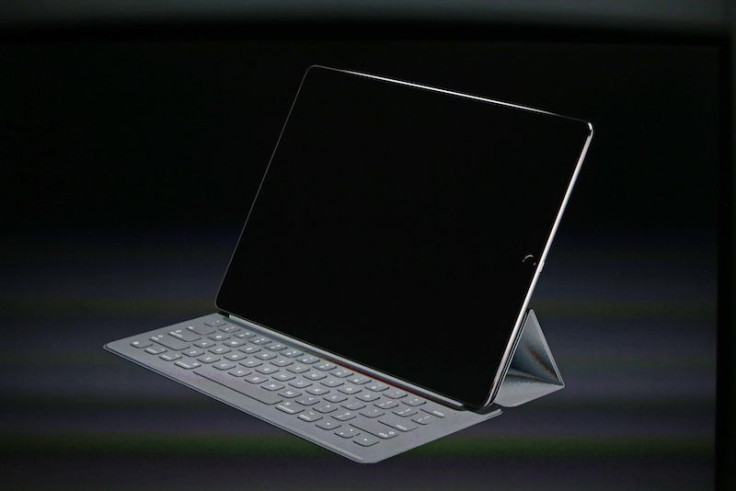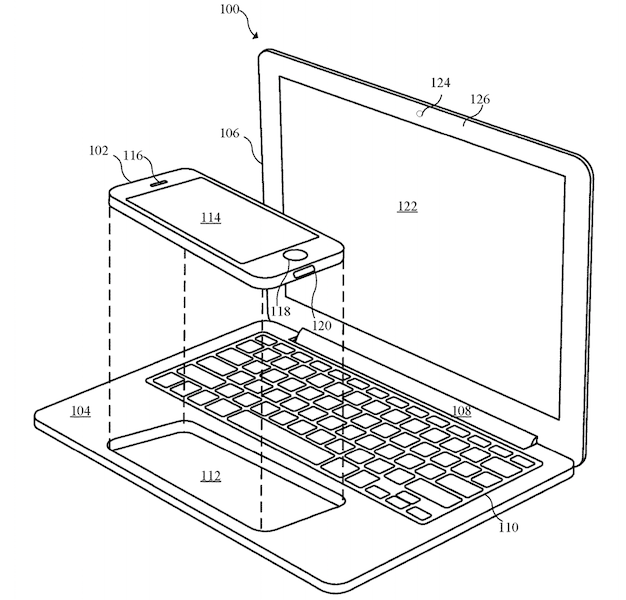Latest Apple Patent Shows Laptop Powered By iPhone, iPad

An Apple patent, which was published earlier today, shows off the tech giant’s desire to create an iPhone-powered MacBook. The product, as seen on some illustrations, looks like a laptop with an iPhone-sized dock where the touchpad is supposed to be.
The patent filing, which was submitted back in September and was only published on Thursday, describes a device that will serve as the primary output for the user. What’s more interesting is that the device will “solely be controlled by the electronic host device,” which in this case can may be alluding to an iPhone.

To put it simply, an iPhone will potentially power the laptop-like device and handle all the processing. The patent also states that the “electronic host device” will be “an input device” that’s configured to recognize touch controls. The iPhone will basically function as the touchpad of the device.
This concept is somewhat similar to HP’s LapDock accessory for its HP Elite X3 smartphone, as pointed out by The Verge. The LapDock looks like a premium ultrabook, but it only works like a full-fledge Windows 10 PC once it’s connected to the HP Elite X3 smartphone.
Another interesting thing about this latest Apple patent is another laptop design wherein the screen can be replaced with an iPad. Like the previous concept, this design also implies that the iPad will also function as the brains of the entire device, as pointed out by 9To5Mac.
Apple’s current iPad Pro line currently features an optional keyboard case. However, it still lacks a touchpad to provide a MacBook style experience.

Although both concepts appear to be appealing, it does mean one big setback. Since the devices described on the patent filing appear to be powered by an iPhone and an iPad, it would be running iOS and not MacOS.
Although iOS is great for mobile, it’s not capable of providing a real desktop/laptop software experience. That’s something Microsoft is ahead of with Windows 10 Mobile’s Continuum.
That said, Apple patents a lot of its experimental products and majority of them don’t really end up becoming real. However, this does indicate that Apple is trying to figure out a way to make its iPhones and iPads function more like MacBooks, or rather, bridge the gap between mobile and laptop experience.
© Copyright IBTimes 2024. All rights reserved.





















